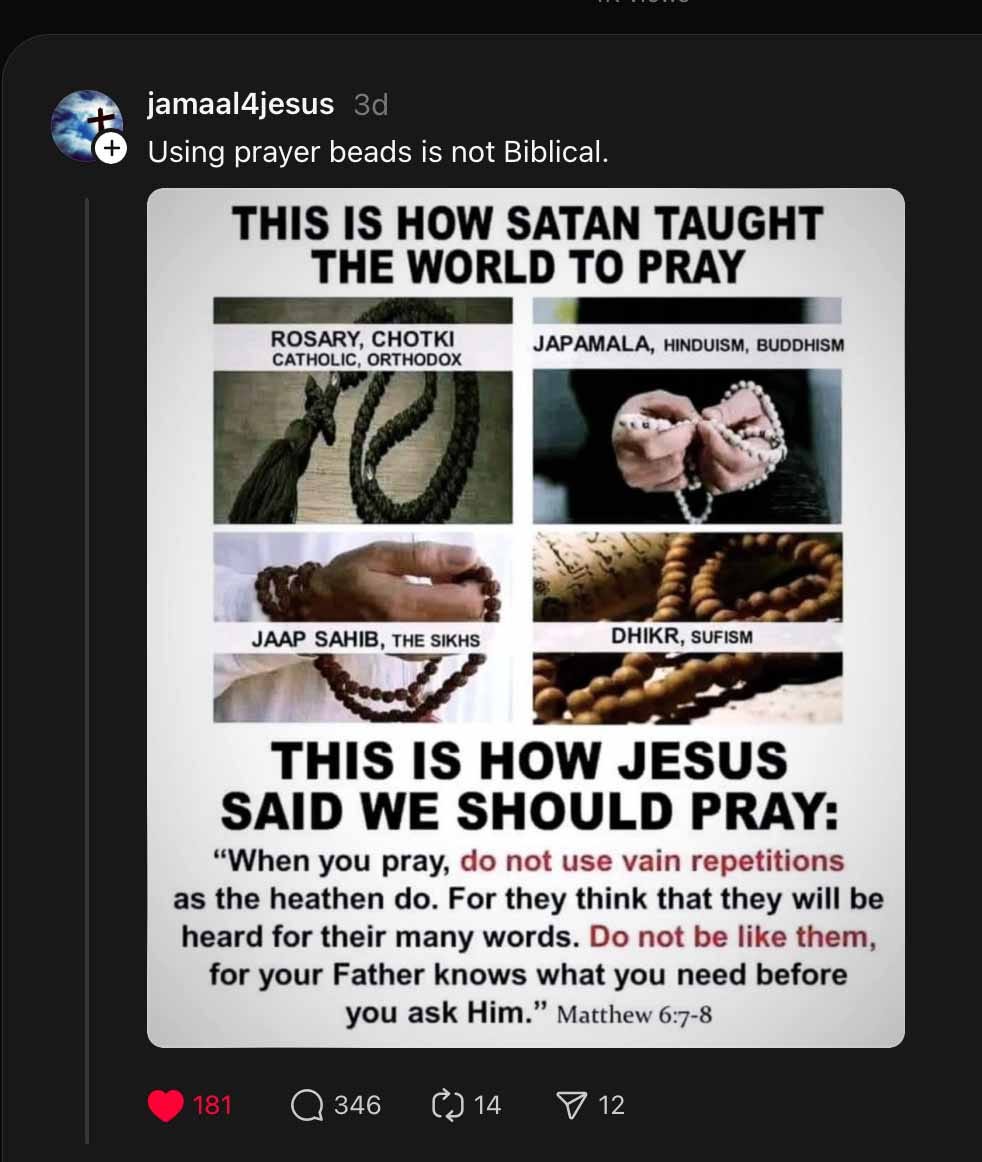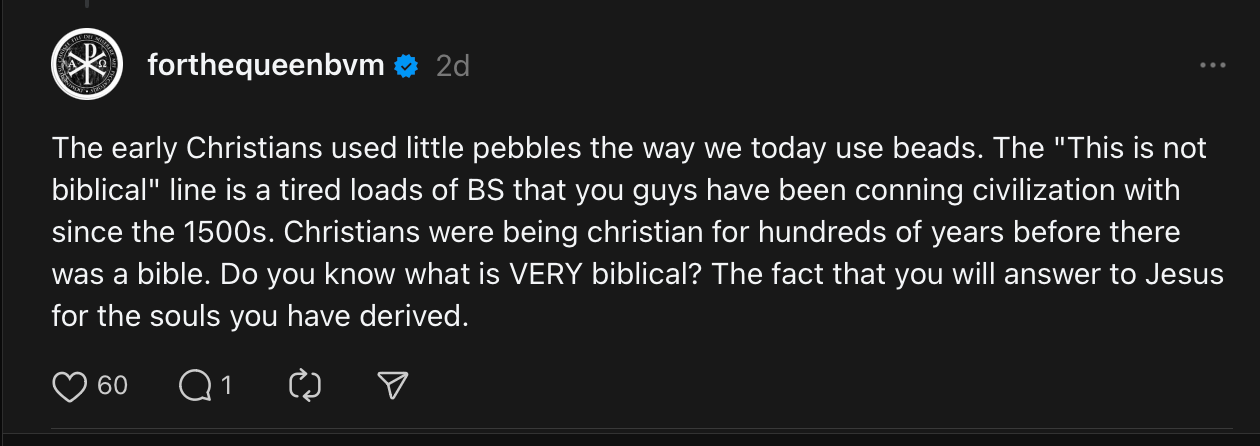Pebbles and Prayer: How Early Christians Kept Count
"Using Prayer beads is not biblical!" he said. But that doesn't mean it isn't Christian!
I came across a post on Threads the other day—one of those confidently wrong zingers that floats around Protestant corners of the internet. It claimed that “using prayer beads is not biblical,” accompanied by a smug graphic with the caption: “This is how Satan taught the world to pray.
”
That kind of thing infuriates me—not just because it's dumb, but because it’s lazy, historically illiterate, and spiritually damaging. So, I figured it was worth laying out a quick and honest rundown of where the Christian tradition of prayer beads—and prayer counting in general—actually comes from. Spoiler: it’s not from Satan. It’s from the desert, from the saints, and from the deep human instinct to stay rooted in prayer.
We tend to think of the rosary as a medieval invention—and in its current form, that’s true. But the instinct to count our prayers, to tether our mind to the rhythm of repetition, goes back much further. In fact, long before there were beads strung on cords, some of the earliest Christians were using… pebbles.
Out in the Egyptian desert, where the monastic tradition first began, you’ll find accounts of 3rd century monks counting their prayers by setting aside a pebble for each one said. It’s simple and earthy—prayer grounded in dirt and dust. A monk would say 100 or 300 prayers a day, depending on his discipline, and drop a pebble into a bowl or toss it aside to keep track.
“We can trace the practice of counted prayer—whether with pebbles, knots, or beads—to at least the 3rd century”
Of course, pebbles are easy to lose and bowls are easy to knock over. So they evolved the method: knotted ropes. Early monastics, especially in the East, tied a set number of knots into cords so they could keep pace with their devotions. Eventually, those knots turned into wooden beads. That practice gave rise to what the Eastern Church still uses today—the prayer rope, or komboskini. These cords might have 33, 50, or 100 knots, and they’re used for the Jesus Prayer: “Lord Jesus Christ, Son of God, have mercy on me, a sinner.”
So how far back does this go? We can trace the practice of counted prayer—whether with pebbles, knots, or beads—to at least the 3rd century. Palladius, a 4th-century writer, described one monk dropping a stone after every prayer to keep count. That’s almost as old as post-apostolic Christianity itself.
Even before that, Jewish tradition already had a strong rhythm of repeated prayer, especially with the Psalms and the Shema. It’s not hard to imagine early Christians—many of them former Jews—adapting those patterns with their own tools.
In the Western Church, it was in the early Middle Ages that prayer cords became more formalized. Laypeople who couldn’t read the Psalms began praying 50 or 150 Our Fathers instead. These were counted with what were called Pater Noster cords, and by the 12th century, these were common among monks and laypeople alike. That’s when things began to take on the shape we’d recognize as a rosary today—especially with the growing popularity of Marian devotion and the inclusion of Hail Marys.
Te next time you pick up a rosary know that you’re not doing anything new. You’re actually doing something ancient. You're stepping into the rhythm of generations past: monks in the desert, saints in cloisters, moms in kitchens. All of them counting their prayers one knot, one stone, one bead at a time





My brother, you've highlighted yet another example of the anti-Catholicism that is baked into the WASP United States.
As you've seen, I used to reply to such nonsense. I've decided to do my best not to. Partly because I return the same amount of disrespect to them they give to us/our Church/our Mother so I was not/am not Christ like with that at all. And also partly because I'm not sure if I'm responding out of pride or with the right heart.
Stay the course. Keep up the fight. Godspeed.